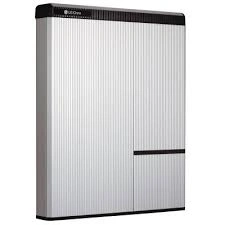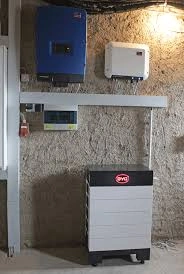As solar panels become more widespread, more homeowners are investing in home batteries. These batteries store excess solar energy produced during the day, allowing households to use their own clean energy at night without relying on the grid. This seems beneficial for the environment, but what if the materials used in these batteries cause significant environmental harm?
We've previously discussed the materials in solar panels that sometimes spark controversy (such as lead and cadmium), and how Zonnefabriek panels do not contain them. But what about home batteries, specifically the lithium used in them?
In the past, home batteries were typically lead-acid batteries, similar to classic car batteries. These contain lead and a liquid or gel-based acid. Since lead is toxic, these batteries must be properly recycled, and fortunately, lead is highly reusable.
However, lead-acid batteries are bulky, heavy, and cannot be deeply discharged without losing lifespan. That’s why lithium-ion batteries are now the preferred choice for home energy storage. They are smaller, more efficient, and last longer without significant capacity loss. For these reasons, lithium batteries are widely used in modern technology, from smartphones and laptops to electric cars and home energy systems.
But is lithium really eco-friendly? To answer this, we need to examine several factors:

It's estimated that 200 grams of lithium is needed per kWh of battery capacity. A typical 5 kWh home battery contains about 1 kg of lithium.
Lithium is found worldwide, but one of the most well-known sources is the border region between Chile and Bolivia. Here, lithium is extracted from vast salt flats in the desert, a process that requires large amounts of water, further depleting groundwater in an already arid region. While alternative methods are being explored, strict regulations and enforcement are needed to minimize environmental impact—something not always guaranteed in countries with weaker governance.
Some local communities oppose lithium mining due to its impact on nature. Major lithium producers, such as Chilean company SQM, claim to consider these concerns and even track environmental indicators, such as the number of flamingos in affected areas, in their sustainability reports.
Unlike lead, lithium is not highly toxic, so it does not pose a major health risk. However, it has a strong corrosive effect, so direct contact should be avoided.
Lithium can be extracted from used batteries and recycled, but the process is currently more expensive than mining new lithium. Battery manufacturers such as LG Chem (South Korea) and BYD (China) claim to have recycling programs, but since home batteries are still relatively new, large-scale recycling efforts are only just beginning. BYD, for instance, has opened a major lithium recycling plant in Shanghai.
Overall, lithium's environmental impact is not insurmountable, but we must remain cautious. With lithium now present in millions of phones, laptops, and electric vehicles, we must ensure that solving one environmental problem (climate change) does not create another—something history has seen before.
At Zonnefabriek, we closely monitor our battery suppliers to ensure they source lithium as ethically as possible and invest in recycling efforts.
For now, we continue to install home battery systems. Curious to know if a battery is right for you? Check out our FAQ on batteries or contact us for more information!
